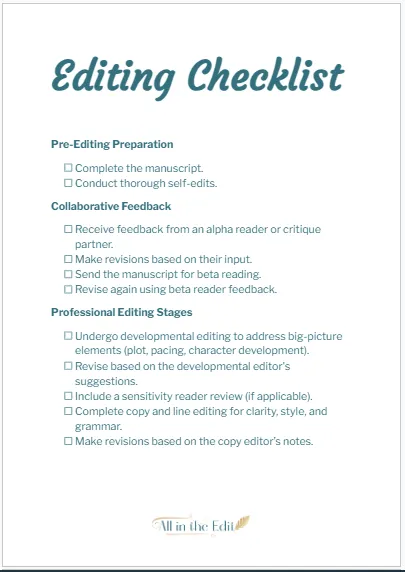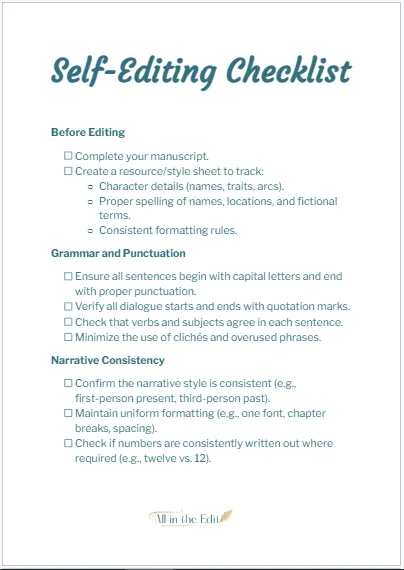
How to Handle Feedback from Your Editor: A Guide for Authors | All in the Edit
Introduction
Receiving feedback from your editor can be both exciting and nerve-wracking. Whether you’re working on your first manuscript or your tenth, editorial suggestions can feel overwhelming. However, learning how to process feedback and apply revisions effectively will strengthen your book and elevate your writing.
At All in the Edit, we guide authors through every stage of the editing and publishing process. Here’s how you can approach editorial feedback with confidence and make the most of your revisions.

1. Shift Your Mindset: It’s About Growth, Not Criticism
Editing is not about tearing your work apart—it’s about making it the best it can be. Your editor is your partner in refining your manuscript, ensuring your ideas are clear, your story flows smoothly, and your writing is polished. Instead of viewing feedback as criticism, see it as an opportunity to strengthen your book.
2. Read Through the Feedback Without Reacting Immediately
When you first receive your editor’s comments, take a step back before making any changes. Read through everything once without making edits or decisions. Give yourself time to absorb the suggestions objectively before diving into revisions.

3. Categorize the Feedback
Editorial feedback typically falls into three main categories:
Structural or Developmental Changes – These suggestions focus on big-picture elements like plot, pacing, character development, or argument structure in nonfiction.
Line Edits – These address sentence-level improvements such as clarity, word choice, and flow.
Grammar and Mechanics – These are corrections for spelling, punctuation, and formatting issues.
Sorting feedback into these categories will help you tackle revisions systematically rather than feeling overwhelmed.
4. Identify Non-Negotiables vs. Personal Preferences
Not all feedback needs to be implemented exactly as suggested. Consider:
Essential Revisions: Does the change clarify meaning, improve readability, or correct an error? If so, apply it.
Subjective Suggestions: Some edits might be stylistic preferences. If you feel strongly about keeping something as is, discuss it with your editor.
Your editor is there to guide you, but ultimately, this is your book.

5. Work Through Revisions in Stages
Rather than tackling everything at once, approach edits in layers:
Big-picture changes first – Address major plot, structure, or content edits before smaller refinements.
Sentence-level improvements – After structural edits, refine wording, transitions, and tone.
Final proofreading – Check for grammar, punctuation, and formatting errors after all other edits are complete.
This structured approach prevents overwhelm and ensures you don’t miss crucial changes.
6. Ask for Clarification When Needed
If a suggestion isn’t clear, don’t hesitate to ask your editor for clarification. A good editor welcomes dialogue and wants to help you understand the reasoning behind their feedback. Open communication leads to a stronger final manuscript.

7. Take Breaks and Review Your Revisions
Once you've implemented edits, step away for a day or two before reviewing your manuscript again. Fresh eyes will help you catch any remaining inconsistencies and ensure your revisions align with your vision.
Final Thoughts
Handling editorial feedback effectively is a crucial skill for any author. By approaching revisions with an open mind, breaking them down into manageable steps, and maintaining communication with your editor, you’ll transform your manuscript into a polished, professional book.
At All in the Edit, we support authors through every stage of editing and publishing. If you’re looking for expert guidance on refining your manuscript, we’re here to help. Get in touch today and let’s bring your book to life!


